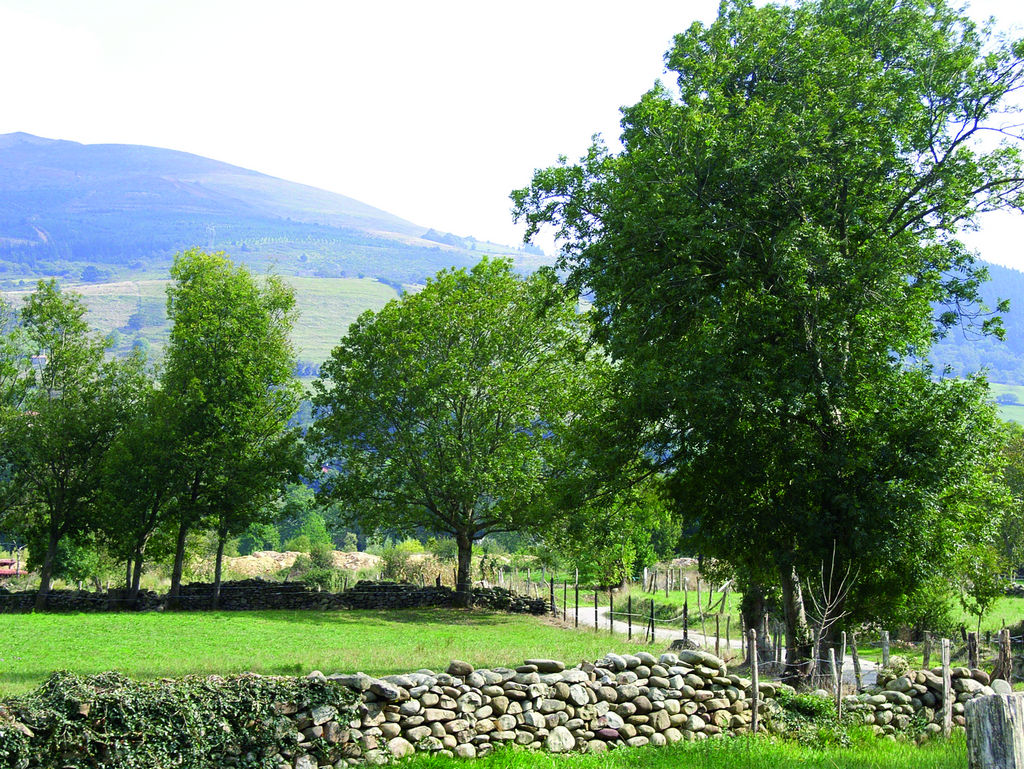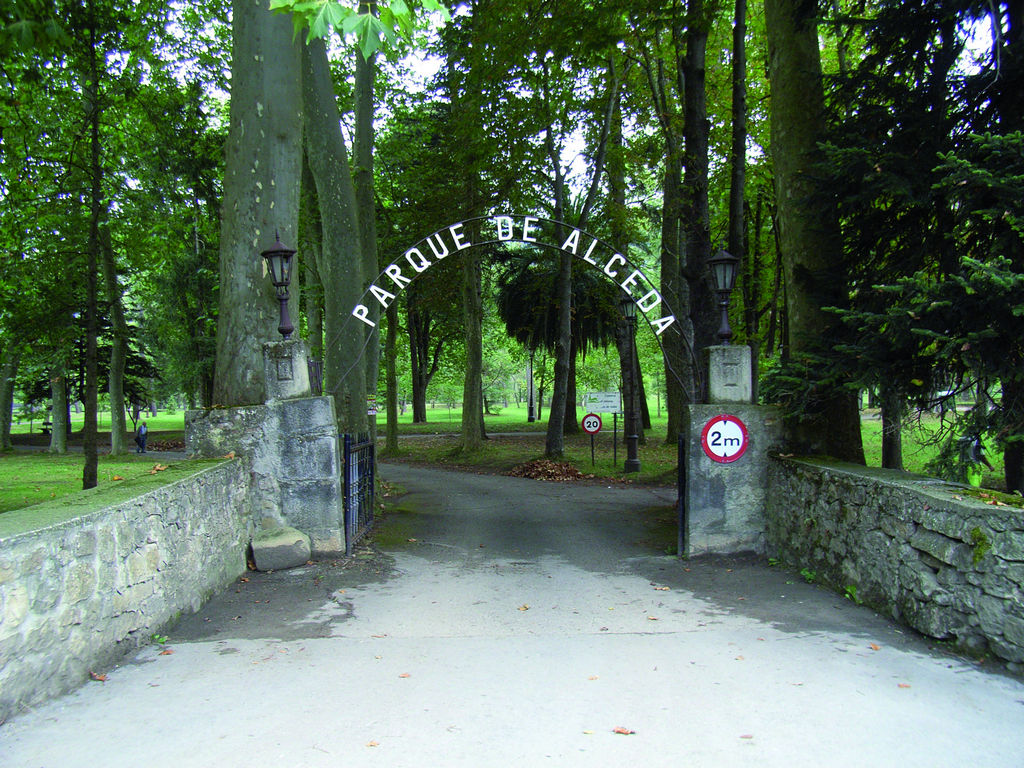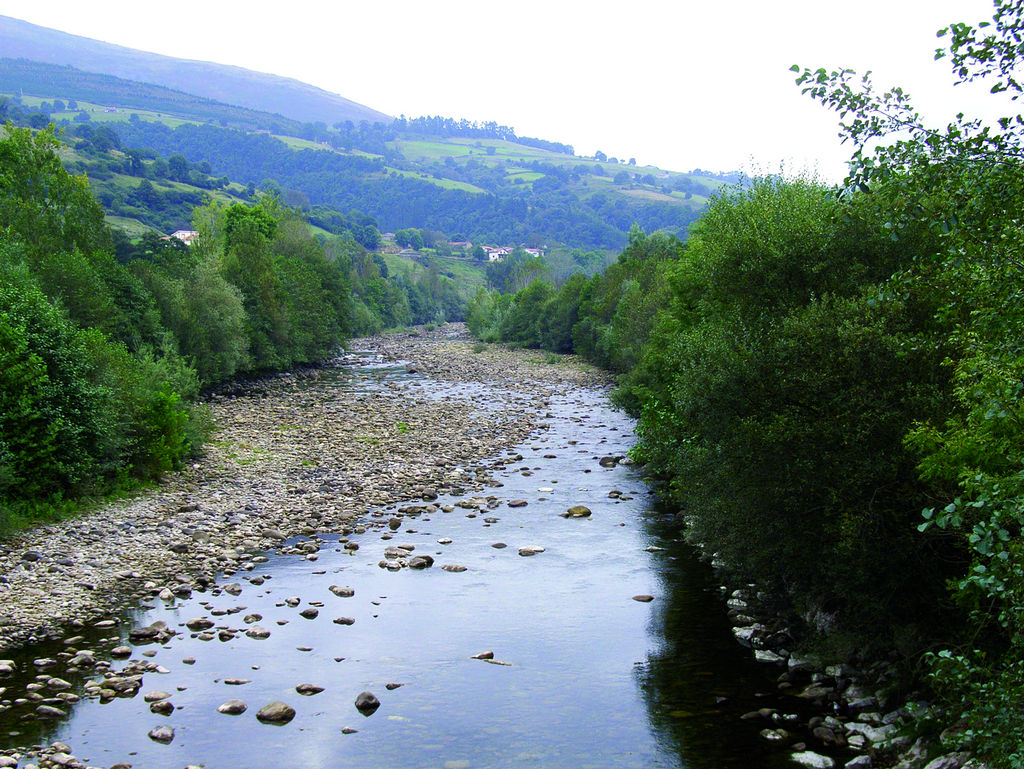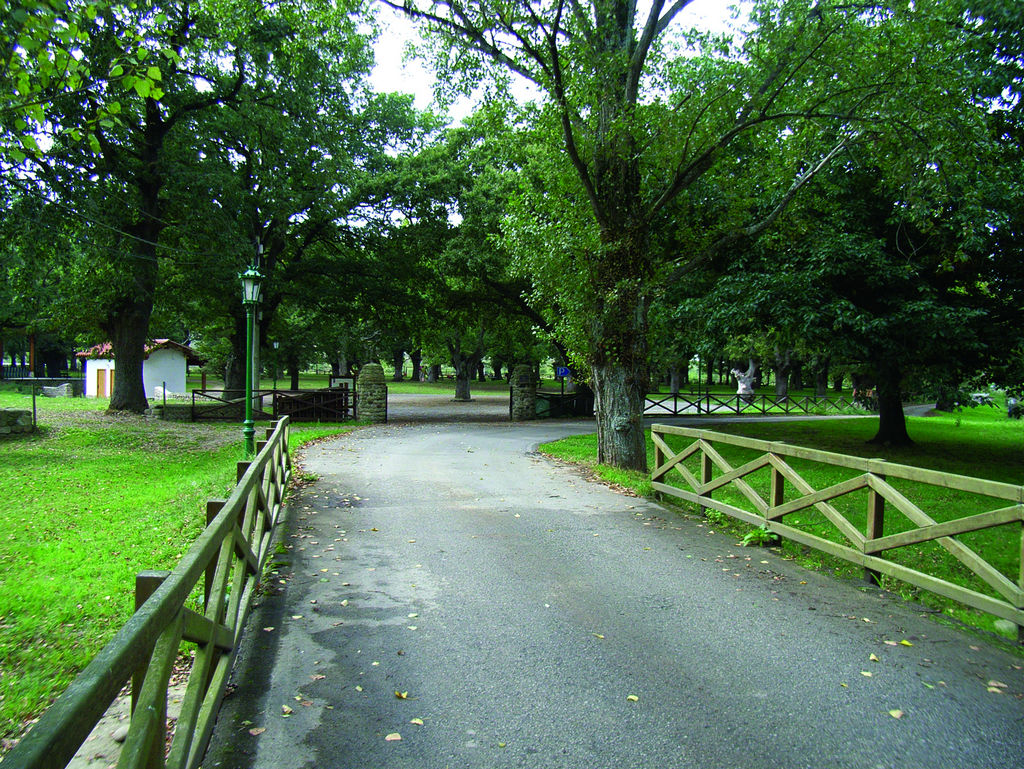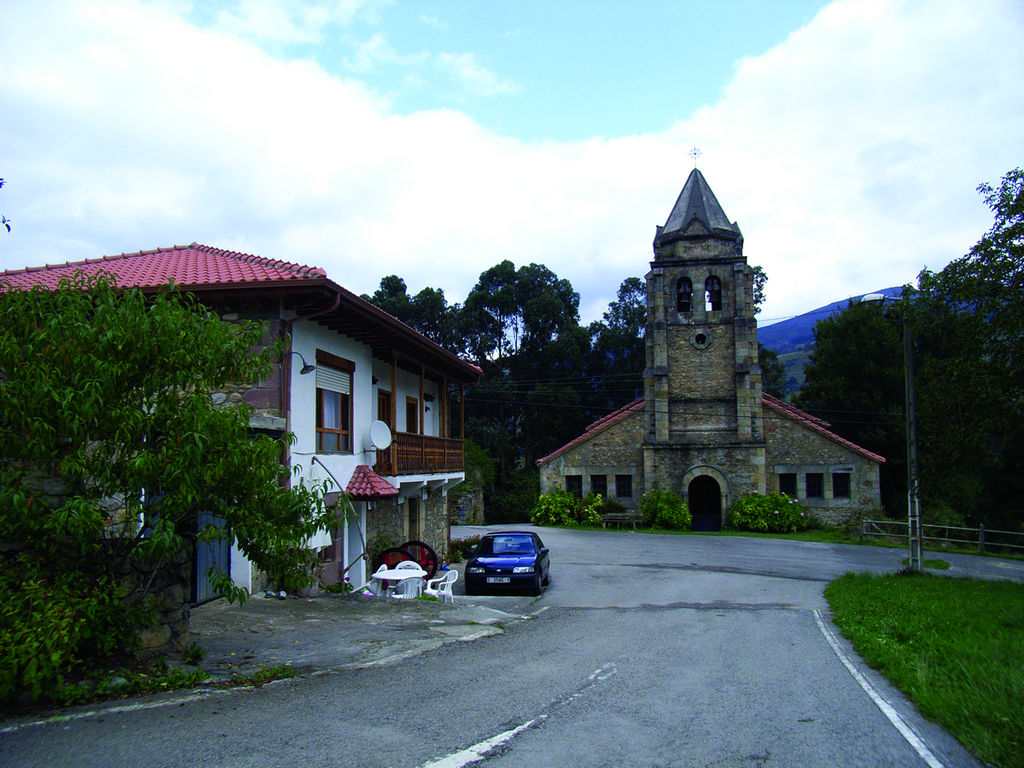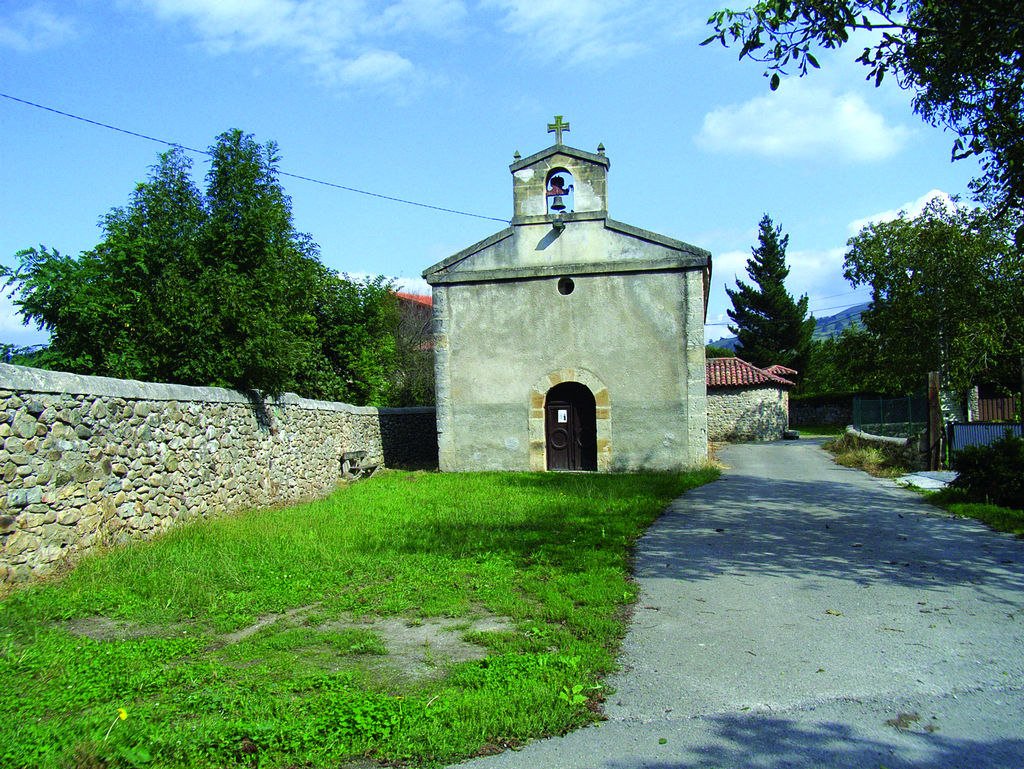- Home
- Rural Development
- Nature Trails
- Nature Trails
- Northwest Sector
- Valle de Toranzo
Toranzo Valley Nature Trail
Description

Heather and hazels in a valley open to the future
Corvera de Toranzo is a municipality in the Autonomous Community of Cantabria. It is situated in the River Pas basin in Toranzo Valley, Pas-Miera County, known also as the Pas Valleys. To the north it borders with Puente Viesgo; to the south with Luena; to the east with Santiurde de Toranzo; and to the west with Arenas of Iguña, Anievas and San Felices de Buelna.
This town is fortunate in that, owing to the strength of various industries - hospitality (Balneario de Alceda), tourism, food and, in particular, dairy (El Buen Pastor)- it has avoided the population decline that other rural areas of Cantabria have experienced.
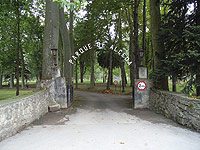
Corvera de Toranzo's wide appeal lies in its rich natural and artistic heritage. Worthy of note are the banks of the River Pas, which abound in trout (Salmo trutta) and salmon (Salmo salar), and the mountains Cilda and Espina del Gallego, theatre of the Cantabrian wars. Furthermore, there are a variety of beautiful woodlands. In terms of artistic heritage, special mention should be made of the civil architecture. In particular, the emblazoned mansions and palaces owned by different noble families such as the Ceballos, Ruiz de Bustamante or Ruiz de Villegas, and the Agüero Tower in San Vicente de Toranzo.
Toranzo Valley was a seigniory owned by the Marquis of Aguilar de Campo, Count of Castañeda. There are two Nature Trails that traverse the valley, giving the traveller a better understanding of its people, nature and traditions.
1 - Ontaneda Route
The route begins on CA-602, next to the park by Alceda Health Spa. It follows the road that skirts the park, crosses the Vejoris Bridge over the River Pas and takes the left fork through grazing meadows that dominate the landscape of the valley.
The Trail continues towards Vejoris. After winding through this town, it continues amidst meadows and fields of crops to San Martín de Toranzo.
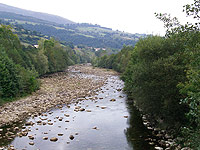
Once in the town, the route continues to a crossroad with the bus stop shelter at one side. Further on, at the intersection on the edge of the village, the route turns west onto a paved road to the left, next to the church, and leaves a park and a bowling alley to the left. It then continues to a green iron bridge with a wooden floor, where, it once again crosses over the River Pas.
After crossing the bridge, the route continues upstream to the left, and passes next to a sawmill. Further on, it arrives at an intersection with a small grass roundabout, and heads straight ahead along a paved path, with the gentle murmur of the river and songs of birds in the background.
Through willows (Salix sp.), ashes (Fraxinus sp.), alders (Alnus glutinosa), poplars (Populus sp.), hazels (Corylus avellana) and strawberry trees (Arbutus unedo) that bring life and colour to the landscape, the Trail reaches the municipal pool of Ontaneda. It heads to the intersection where the new Alceda park is situated, and continues along the paved road to the edge of the park. The Nature Trail skirts around the green area to reach a crossroads whence it reaches Alceda Health Spa and the end of this loop route.
2 - Corvera Route
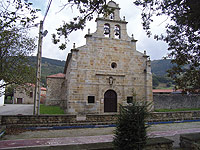
The route starts near the church of Prases, on a paved road to the left of the temple, and heads down a steep slope, between oaks (Quercus sp.), figs (Ficus carica) and eucalyptus (Eucalyptus sp.). At the first intersection, Corvera Nature Trail turns right onto a paved path that runs along the banks of the River Pas, offering a beautiful view of Toranzo Valley. The journey continues straight ahead, parallel to the river, veering at the end to the left to cross a small wooden bridge over a stream. Further on, it follows the course of the river between fields of crop and poplars.
The route continues to a crossing, where it turns left towards Corvera, amidst fields and livestock farms. Past a few industrial buildings, it reaches the village. The path crosses an intersection and winds through several houses to another fork where it turns right towards the N-623.
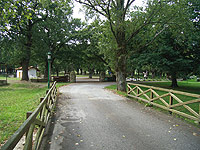
The route crosses the road, continues straight ahead between a house and a wall, and reaches another intersection, where it turns left onto a grass track between walls. At the end of this path, the route continues along a village street, and soon after, heads onto a grass and gravel path. It then passes next to an abandoned stable and reaches a village street, which leads to an intersection with the main road.
The Nature Trail continues to the right of a house on the opposite side of the road and winds through Corvera's streets towards a three-way intersection. It heads straight ahead to a second intersection, next to a stable with cows, where, it turns right and passes next to a tree nursery, a house with a large garden and a small football pitch.
The route advances through a small paved road to Cillero and continues along the main street to the right of the church. It passes straight ahead through two intersections and continues along a narrow paved road out of the village. Finally, the route runs through meadows to reach Prases church, where it ends at the trail head.
Profile
1- Ontaneda route
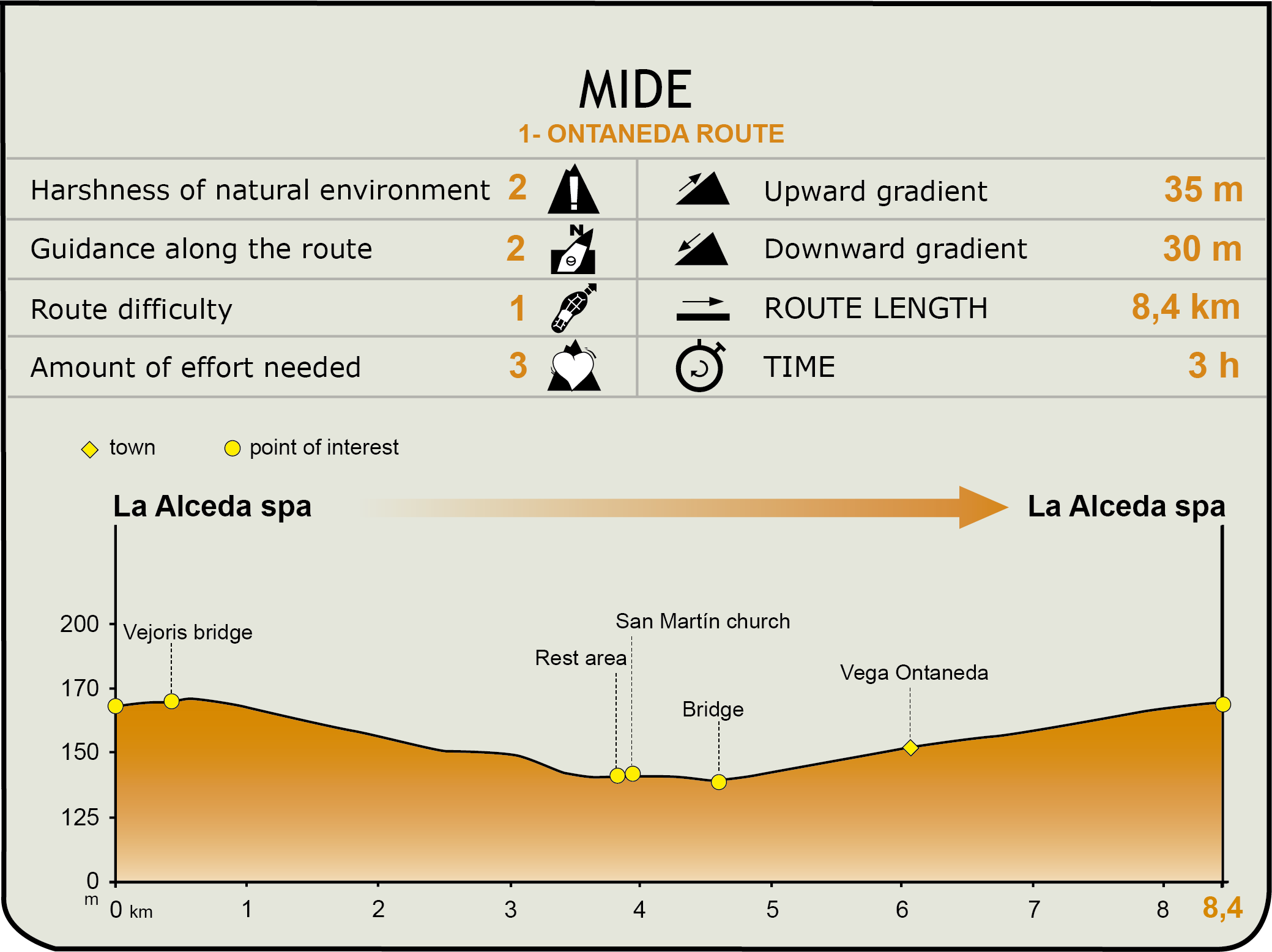
2- Corvera route
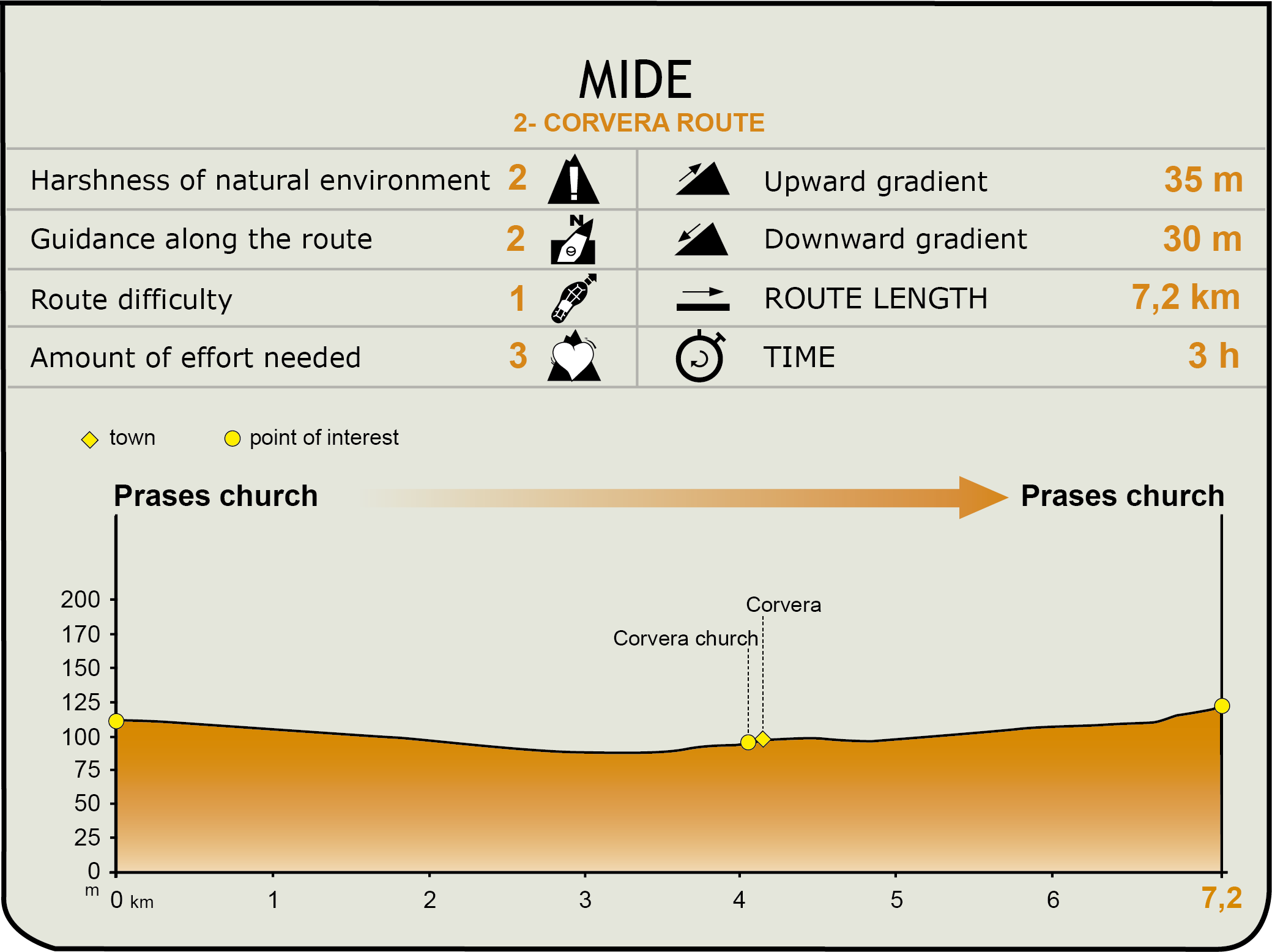
MIDE (Method for the Information of Excursions)
Featured
Further information
Balneario de La Alceda
Opened in July 2001, it has all the amenities of a modern hotel. It is located in a large park of centenary trees next to the River Pas, in the village of Alceda. Its unique location, at the geographic epicentre of Cantabria, allows travellers to enjoy not only the hot springs, but also some of the most important tourism sights of this autonomous region.
